Zeiss f/2 135mm Planar for Contax SLR
These images were shot with a Contax S2 and my original German AE f/2 135mm Planar, which I purchased in about 1981. Most shots are on Velvia; a few are on Elite 400 as it got darker. These photos were taken in a shady area near sunset. All pictures were taken with the lens wide open.
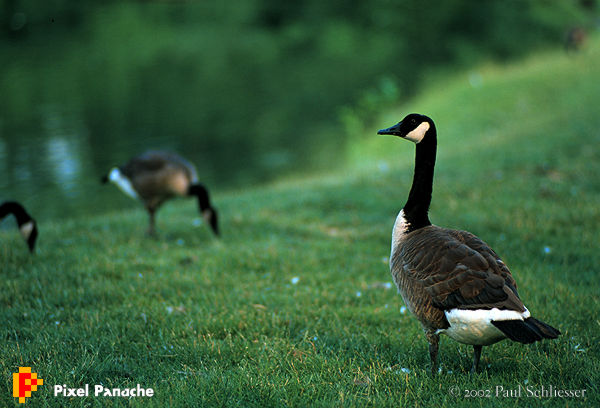
The combination of short telephoto focal length and wide aperture allows you to easily isolate your subject. In these photos, look at the grass—this makes it easy to see the region that is sharply focused.
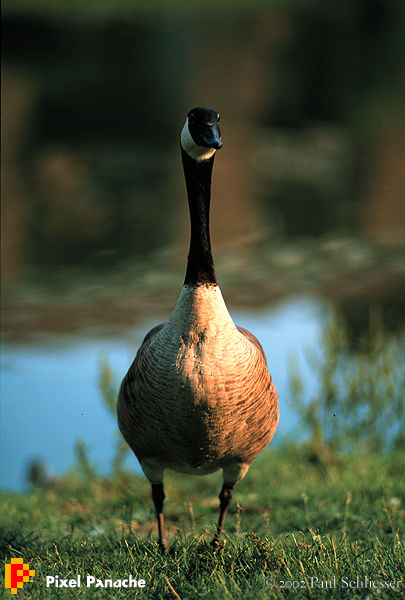
As you move closer, the depth-of-field becomes much shallower. The fast prime lenses, usable wide open, are the whole reason I use Contax (and the reason why I don't own any zooms). I've saved my pennies and purchased a small group of primes over about 20 years. Notice the how the dry, wirey grass is sharply-focused only just in front of the goose's feet. An enlargement of part of this picture is below.
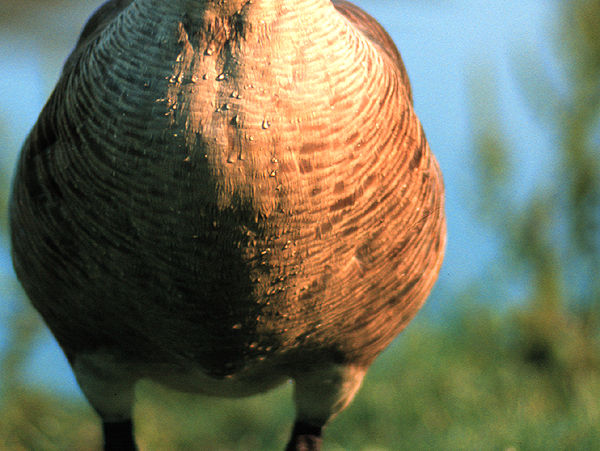
This is an enlargement of the center section of the standing goose picture, showing the falloff of sharp focus. The narrow region of sharp focus gives the image a very three-dimenisonal effect. It's almost like the goose is emerging out of a mist or fog; its head and chest have emerged and are sharp, but the rest of its body becomes softly blurred the further away it is; compare the sharply-focused water drops on the goose's chest and the soft blur of its legs, which are only a short distance behind its chest. It's much more impressive in the actual slide; a low-resolution digital image doesn't really do the effect justice.
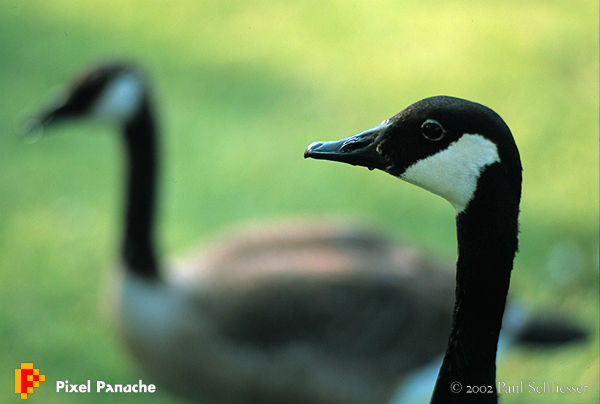
Moving still closer, the background becomes velvety-soft.
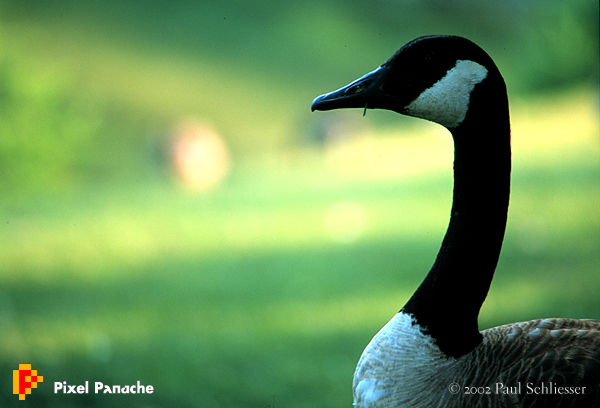
The light-colored blobs visible in the background are the other geese. Everything is a soft blur of almost pure color.
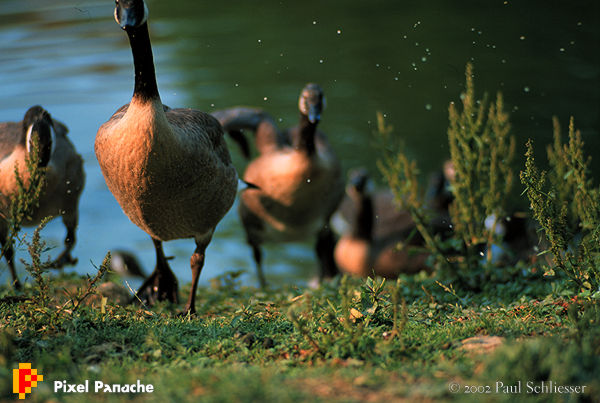
This is not a good photo—I was not quick enough to catch the shot I was trying for. However, I was amused to see the water drops suspended in space (the goose had just flicked its wings). You can again see the grass and plants in sharp focus just in front of the goose's feet, and out-of-focus plants just behind them. You can pull a subject out of even a very cluttered scene using this lens.
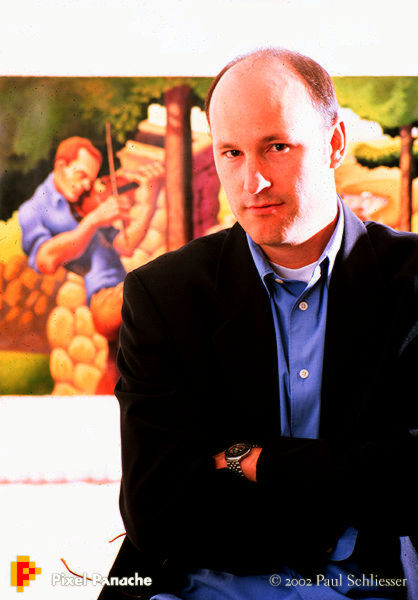
This is a portrait of illustrator Loren Long, which I shot with my RTS III for an annual illustration awards book. Here I used the 135 at about f/4, so that his painting behind him is noticably blurred, but still clearly recognizeable. Again, the effect is more obvious in a slide or when printed than it is in a low-resolution image like this. I like the slightly-flattened perspective of a 135mm for shots like this. This lens is great for portraits (as is the f/1.4 85mm Planar). I would have a hard time deciding which Planar—50mm, 85mm, or 135mm—is my favorite Contax lens. I do have and usea few wide-angle lenses, but normal-to-short-telephoto are the focal lengths I tend to use most often. The great thing with these leneses is that you don't need to be afraid to use them wide open. Just focus carefully!
